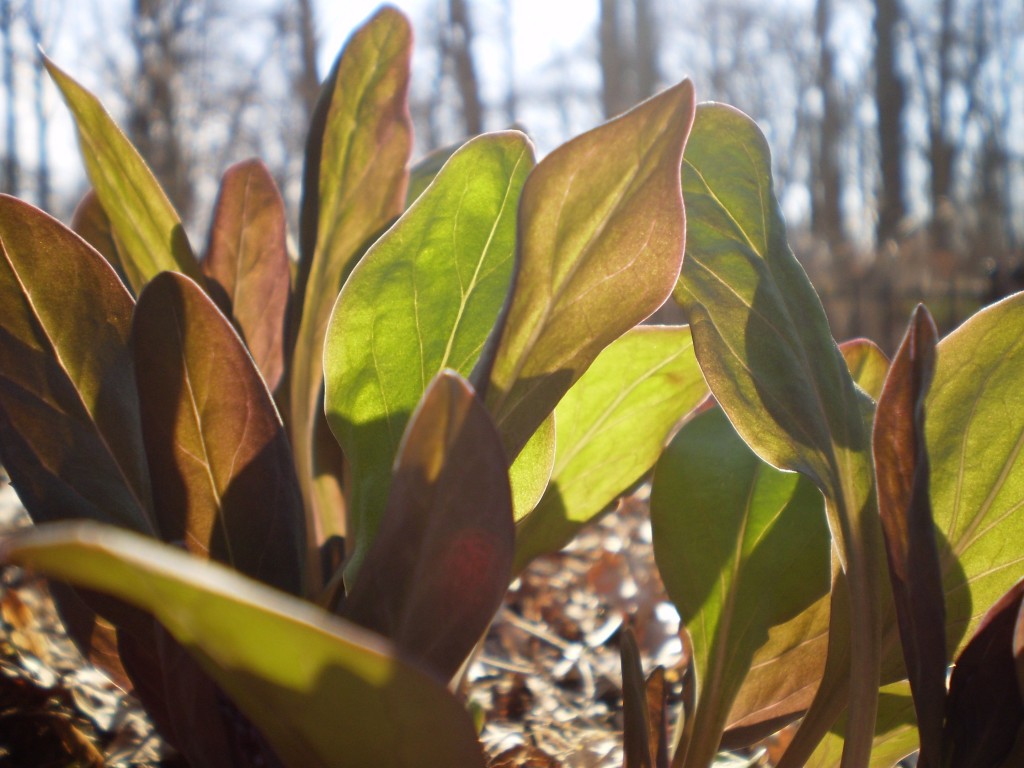
This spring, 2013 has so far been an extension of winter with February-like conditions in late March. This has allowed us to view the early  stages of the spring ephemerals in a state of suspended animation. They came up out of the soil and stopped growing as the cold, cloudy days passed on, one after the other. This has allowed us the opportunity to live with these plants in this state for an extended period of time and appreciate their beauty. The Bluebells are very attractive in this early stage of growth. Some of them have blue leaves.
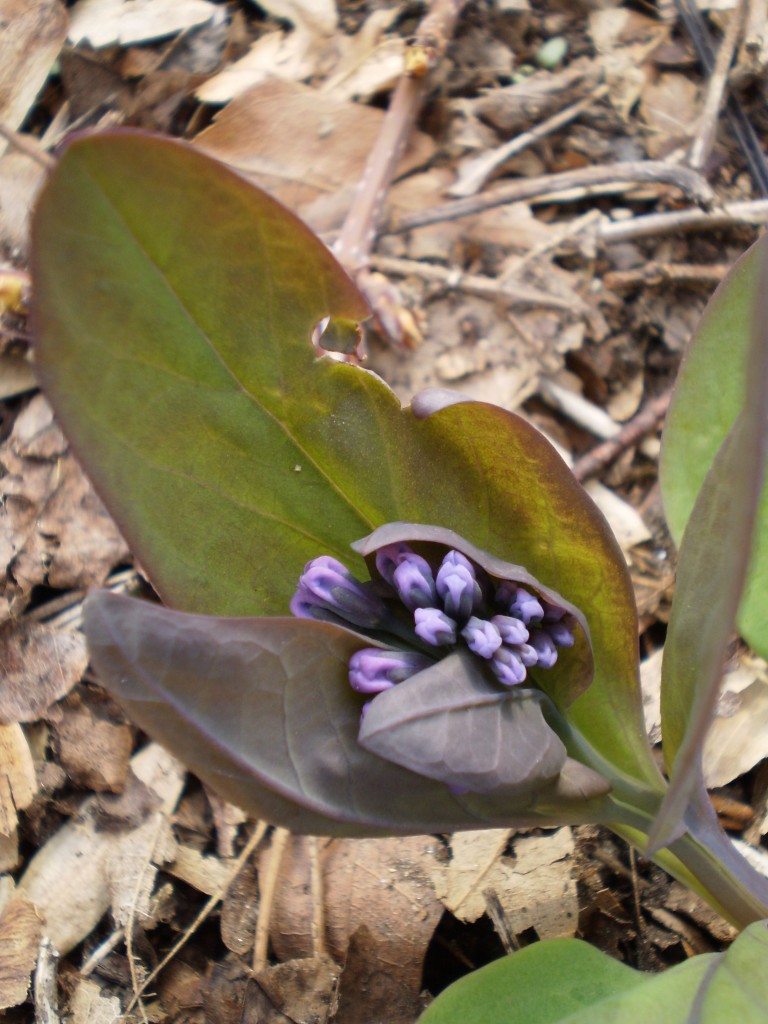
Our new garden fence was erected this winter to curb the problem of off-leash unattended dogs and browsing deer from having full access to the yard. Â While the deer could easily jump the fence, they may be dissuaded by the dried-blood filled canisters attached to the fence, which worked last year to fend them off. We will see how it works this year. We also planted up the edge of the garden with deer-resistant plants such as Bluebells, Columbine, and Wild Ginger.
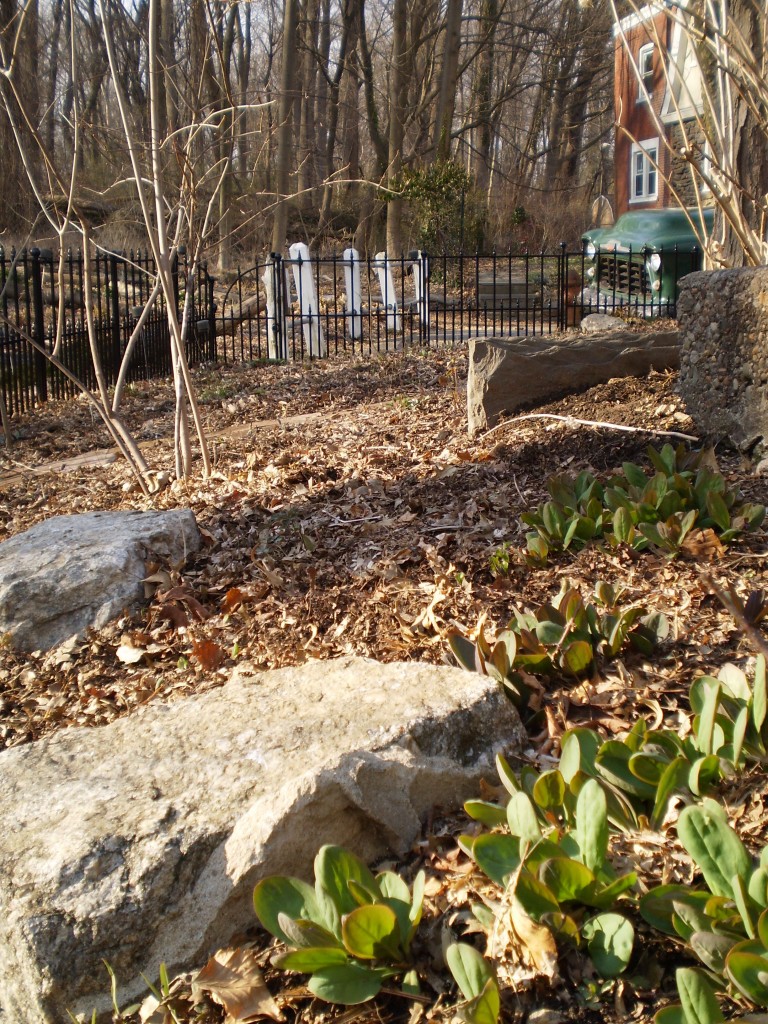
The garden stones allow us to access the garden for photography, weeding and planting without risking stepping on the delicate plants. To the right, the bluebells are poised to grow and bloom in the next few weeks.
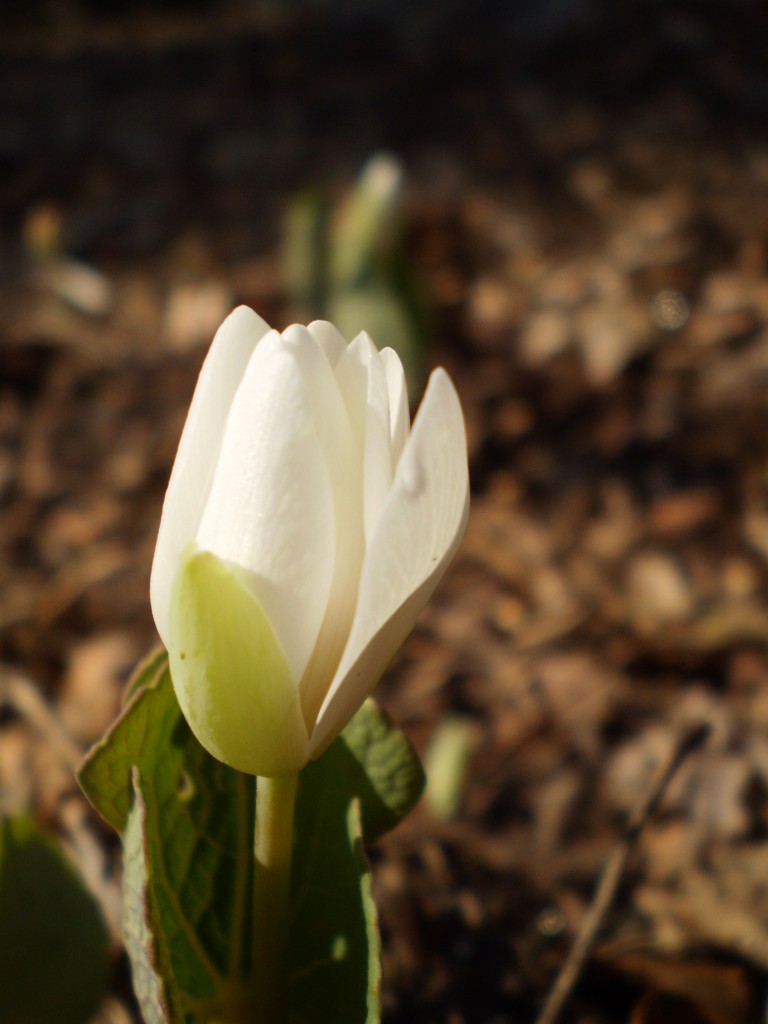
The Bloodroot is poised to bloom. A few specimens bloomed last Saturday, when the temperature reached into the low 60s in the afternoon sun.
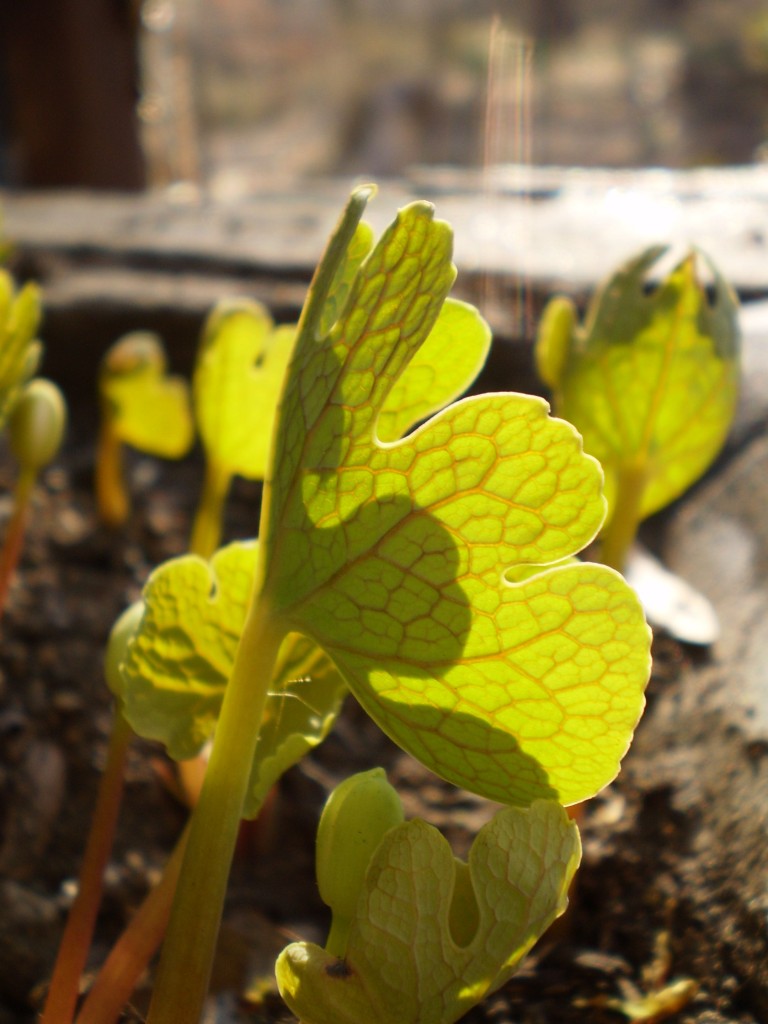
It is really interesting to see the red sap course through the veins of the bloodroot, the Sanguinaria canadensis, a plant with the common and Latin names referring to the blood-red roots and coloring. The name of this website The Sanguine Root is derived from this plant, one of the first native wildflowers to emerge from the forest floor with the purest of white flowers, a fresh green leaf and the astonishing red at the origin.
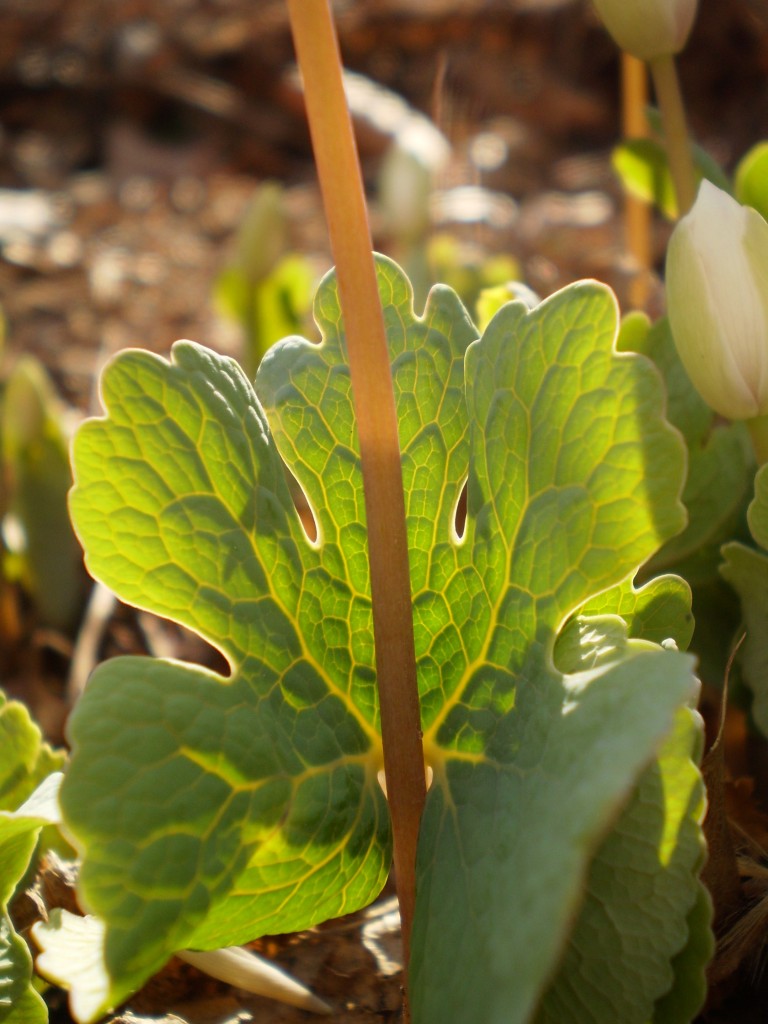
On this specimen the stem reflects the chemistry of this plant.
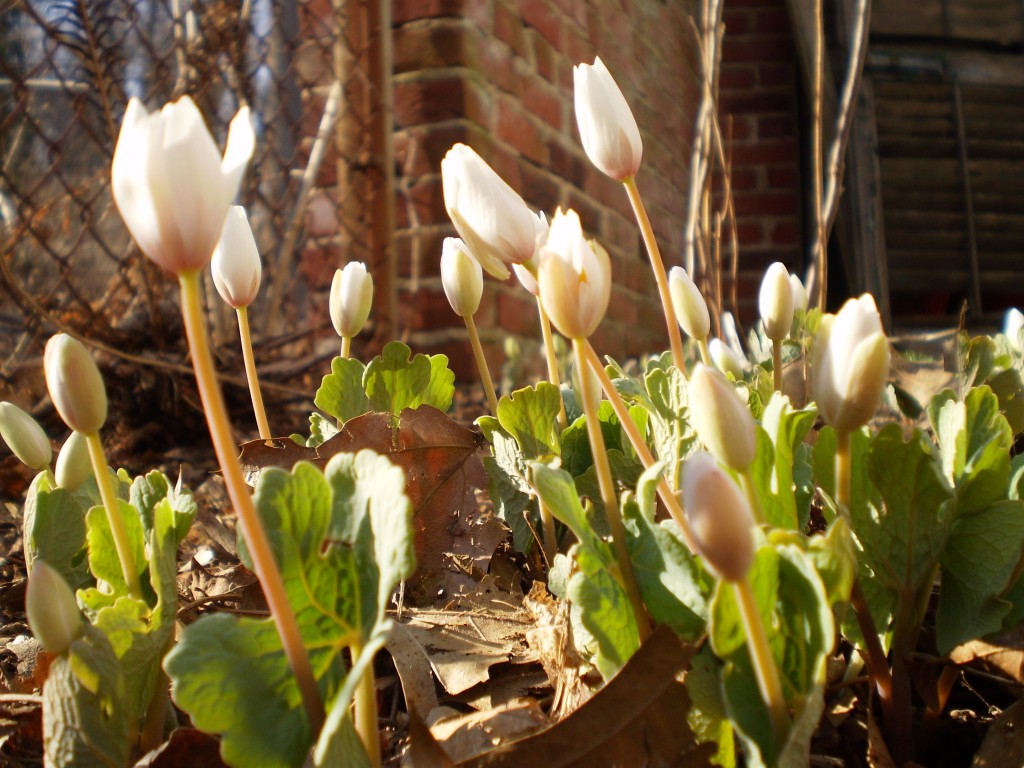
And here they are, ready to bloom!
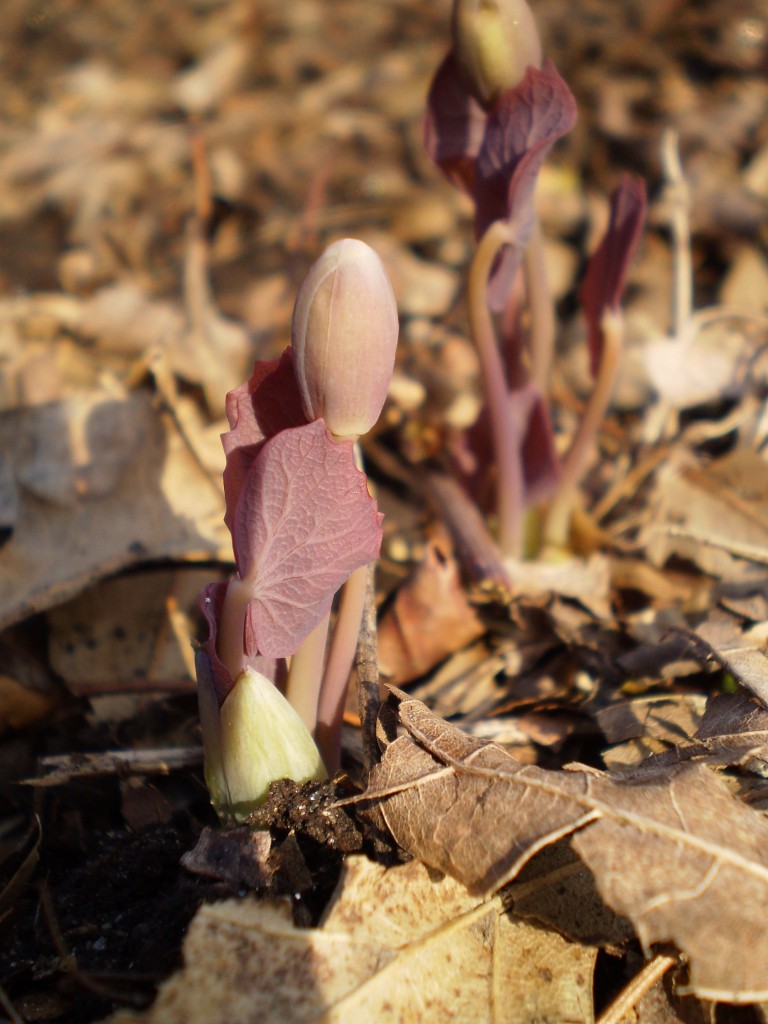
Above is Twinleaf, Jeffersonia diphylla, which is similar to Bloodroot, also poised to bloom.
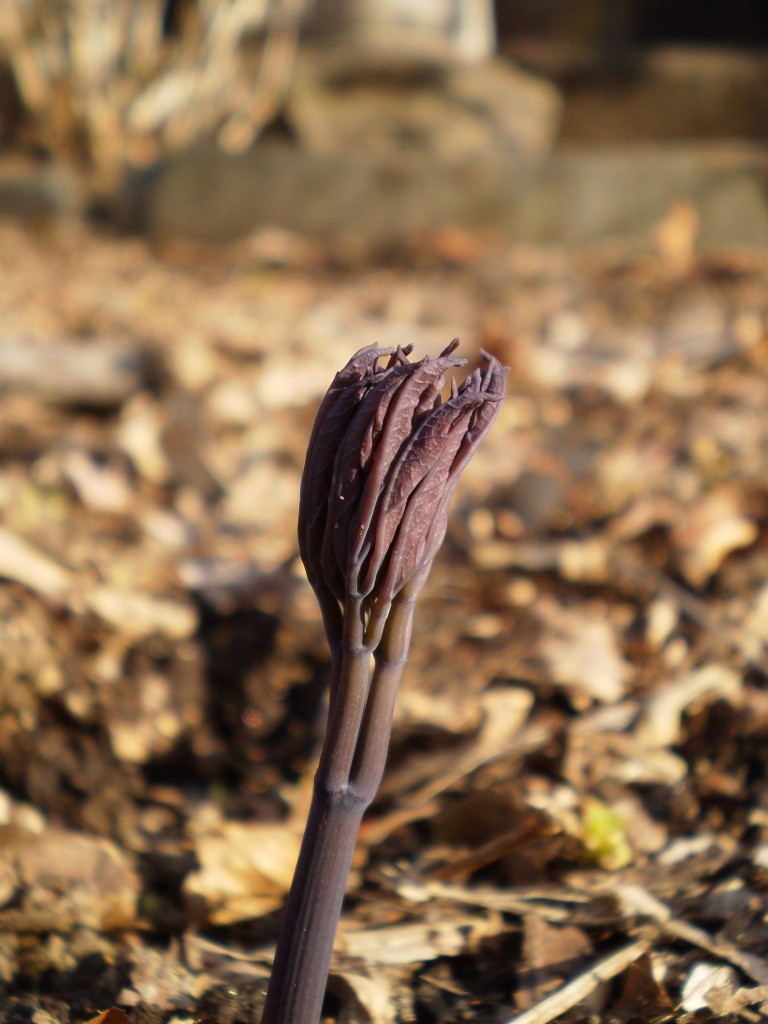
Lastly, this Blue cohosh has also emerged, this one with both red and blue coloring.
It is so much fun to have a native plant garden!
The restrictions of planting specimens native to our specific region have created for us a whole world within the world of gardening.
We can quantify  this world with specific lists, arrange these plants spatially to create a formal setting as well as arranging plants by how we see them in nature and how we can utilize these settings in an ornamental way. There is a certain level of challenge involved in this exercise, and we use garden walks made of bricks, plant signage,  garden ornaments, the bird-bath and garden fences to help outline the spaces and create a definition that reads as a garden.  We have created a  rich Pennsylvania wooded ravine full of colorful wildflowers right in our Philadelphia rowhouse garden!
Philadelphia rowhouse blocks are very well suited to support the kinds of colorful wildflowers found in the rich, deeply-cut ravines found throughout Pennsylvania, because these neighborhoods create the conditions of the protected ravines. The rowhouses are not too tall to block out too much sun, but they provide the protection needed for the more delicate types of plants.



Mertensia Virginica… I know them as Virginia Cowslips.